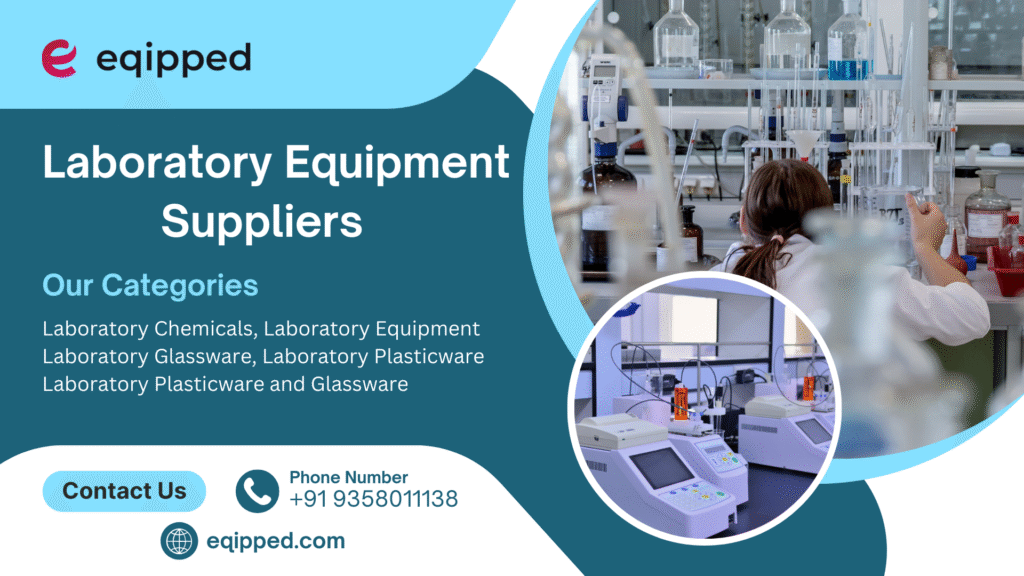In every scientific setting—be it education, research, diagnostics, or industry—the quality of your laboratory chemicals directly influences outcomes. With the right purity level, proper handling, and dependable supply, you can ensure accuracy, compliance, and cost efficiency. That’s why Eqipped offers a carefully curated range of Laboratory Chemicals, built to match your operational needs precisely.
Choose the Right Chemical Grade — Smart and Effective
Not all chemicals are created equal, and selecting the correct grade is key to both performance and budget control:
-
High-Purity Grades (ACS, Reagent, USP/NF)
Ideal for analytical testing, regulatory compliance, and pharmaceutical formulations. These meet very stringent purity standards. -
Laboratory Grade
A cost-effective choice for educational and general lab use where ultra-high purity isn’t necessary. -
Purified/Technical Grades
Budget-friendly and suitable for industrial or non-critical workflows where trace impurities are acceptable.
Takeaway: Match your chemical grade to your task—not all applications require the highest purity, and not all solutions need only basic formulations.
What You’ll Find in Eqipped’s Chemical Lineup
Our collection covers a full scope of lab needs:
-
Acids & Bases – Used for titration, sample preparation, and cleaning.
-
Solvents – From ethanol to acetone—ideal for extractions, filtration, and cleaning.
-
Buffers & Indicators – Maintain reaction environments and support clear visual endpoints.
-
Inorganic Salts & Reagents – Core ingredients for calibration, culture preparations, and general lab chemistry.
-
Biochemical Reagents & Dyes – For staining, diagnostics, and biological assays.
-
Disinfectants & Preservatives – Essential for maintaining a contamination-free workspace.
Safe Storage & Handling — Make It a Priority
Implement these best practices for a safe chemical ecosystem:
-
Organize by Regulated Class
Keep acids, bases, flammables, and oxidizers separately to minimize risks. -
Label Smart and Rotating Inventory
Include names, grades, and receipt or opening dates—use a “first in, first out” rotation system. -
Store Properly
Keep flammable solvents in ventilated, explosion-proof cabinets—not in standard refrigerators. -
Use Secondary Containment
Place chemicals in trays or bins that can contain at least 110% of potential spills. -
Dispose of Waste Correctly
Never pour chemicals down the drain—use labeled waste containers and follow disposal protocols. -
Protect Yourself with PPE
Always wear gloves, goggles, and lab coats—and consult Safety Data Sheets for necessary precautions.
Why Labs Trust Eqipped for Chemicals
-
Grade Options for Every Need — From pharmaceutical to technical—select what fits your lab’s demands.
-
Clear, Safe Packaging — Trust in precise labelling and secure containers.
-
Transparent Pricing — Pay for the right purity—not a premium you don’t need.
-
Expert Support — Guidance available for grade selection, workflow compatibility, and best practices.
-
Reliable Delivery Across India — Keep your lab supplied with dependable, timely service.
Final Thought
High-grade chemistry is the cornerstone of scientific integrity. With Eqipped’s Laboratory Chemicals collection, you’re equipping your lab not just with reagents—but with accuracy, dependability, and safety.
Explore the full range today:
Browse Laboratory Chemicals on Eqipped
Frequently Asked Questions
| Question | Answer |
|---|---|
| Which grade suits pharmaceutical or analytical work? | High-purity grades like ACS, Reagent, or USP/NF for accuracy and standards compliance. |
| Is lab-grade safe for classroom use? | Yes—it offers a budget-friendly option suitable for educational workflows. |
| How should solvents be stored safely? | Store in ventilated, flammable-proof cabinets—not in regular refrigeration. |
| How to manage chemical stock and expiry? | Label containers with dates, track inventory, and use older stock first. |
| What PPE should be worn with lab chemicals? | At minimum: gloves, goggles, and a lab coat. Always review the SDS for added safety steps. |







